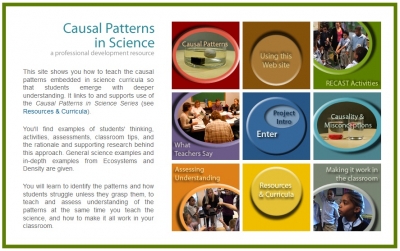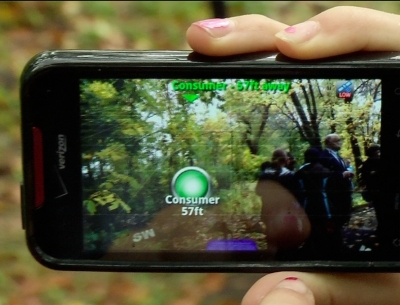Teacher Resources
Causal Learning in the Classroom Curriculum Modules
The Causal Learning in the Classroom (CliC) modules are designed to complement existing curricula in environmental ecosystems and climate change science. They are focused on the scientific content, principles, and habits of mind. The CliC modules aim to augment students’ learning by revealing to them patterns of thinking that impact their ability to perceive, attend to, and reason about the complex causal patterns embedded in science. They bring science content together with what we know about the nature of human cognition to 1) further what students understand and 2) help students realize why some of these concepts are hard for the public to understand and attend to. It invites students to think creatively about these challenges as they develop their own knowledge and create sustainable lives in our world. The two modules are: 1. Becoming Global Thinkers: Thinking about Distant Causes and Effects; 2. Becoming Responsible Individuals: Understanding Distributed Causality. Each module is based upon research that has been carried out on how people think—both in the lab and in the classroom. It is designed to build upon affordances in students’ knowledge, taking what they know from the everyday world and building deeper, more reflective understanding from it.
Causal Patterns in Science
The Causal Patterns in Science website shows you how to teach the causal patterns embedded in science curricula so that students emerge with deeper understanding. You'll find examples of students' thinking, activities, assessments, classroom tips, and the rationale and supporting research behind this approach. General science examples and in-depth examples from Ecosystems and Density are given. You will learn to identify the patterns and how students struggle unless they grasp them, to teach and assess understanding of the patterns at the same time you teach the science, and how to make it all work in your classroom.
The Causal Patterns and Beyond Curriculum can be accessed here.
EcoLEARN
The EcoLEARN Projects include EcoMUVE, EcoMOBILE, EcoXPT, and EcoMOD. All of these projects offer extensive teacher resources with technology that can be downloaded to use the virtual worlds and supporting teacher resources and curriculum activities. Please see the EcoLEARN menu tab for links to the EcoLEARN website and materials.
Helpful Sites
Curriculum materials related to the Understandings of Consequence Project are available through the Annenberg/CPB and Harvard Smithsonian websites: Essential Science Series athttp://www.learner.org/channel/courses/essential/physicalsci/session5/classroom.htmland http://www.learner.org/courses/essential/life/session8/.
Project Zero is an educational research group at the Harvard Graduate School of Education. Project Zero's mission is to understand and enhance learning, thinking, and creativity in the arts, as well as humanistic and scientific disciplines, at the individual and institutional levels.
The Annenberg/CPB Channel focuses on teacher professional development. It is a free satellite/Web service broadcasting 24 hours per day, 7 days per week to provide educational programming for schools, colleges, and communities. It currently reaches approximately 66,000 schools and more than 41 million households.
The Science Education Department (SED) of the Harvard-Smithsonian Center for Astrophysics develops curricula and materials to address the needs of science teachers and students in elementary, secondary, and college science, with an emphasis on grades K-12.
The Lifelong Kindergarten group at the MIT Media Lab aims to re-invent learning and education in a digital society by developing new technologies that expand the range of what people design and create—and what they learn in the process.
The System Blocks Project of the LLK group at the MIT Media Lab focuses on developing computationally enhanced blocks to teach systems-thinking. The System Blocks are a new physical, interactive system that makes it easier for kids to explore dynamic systems and can assist K-12 educators in the teaching of complex concepts of system dynamics and causalities.



